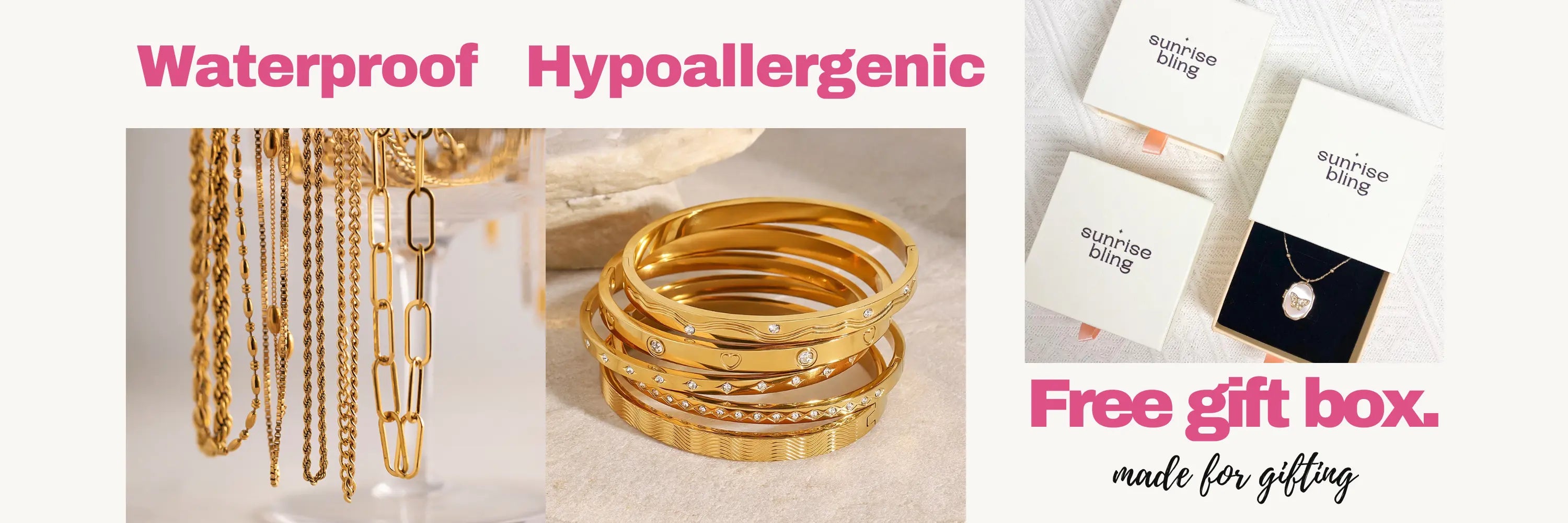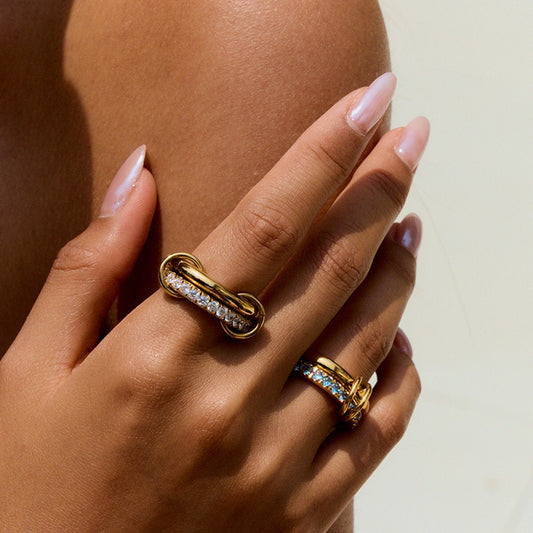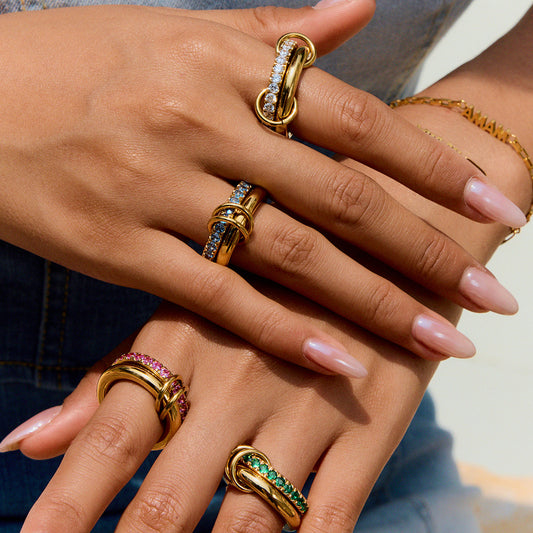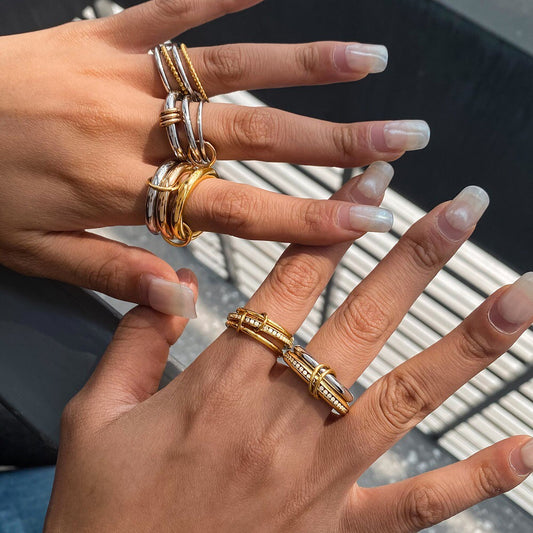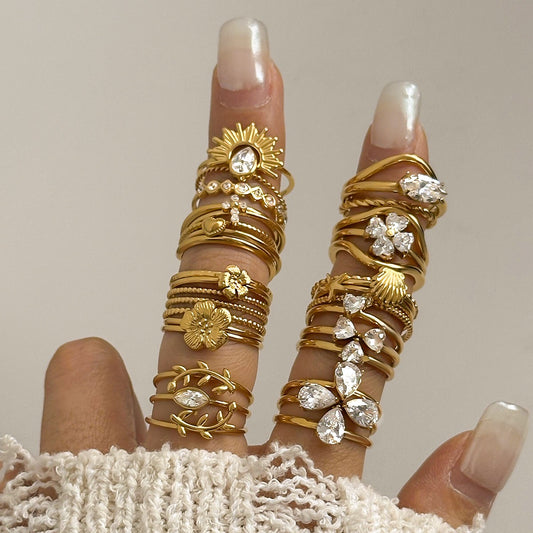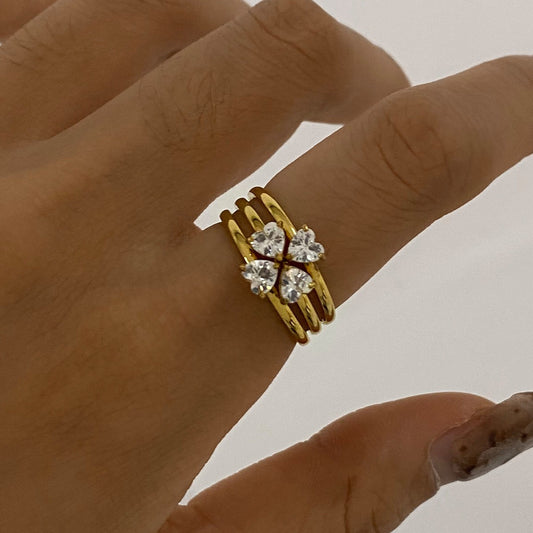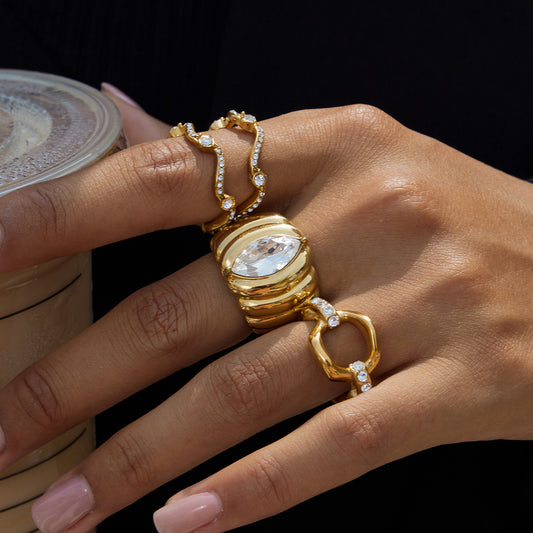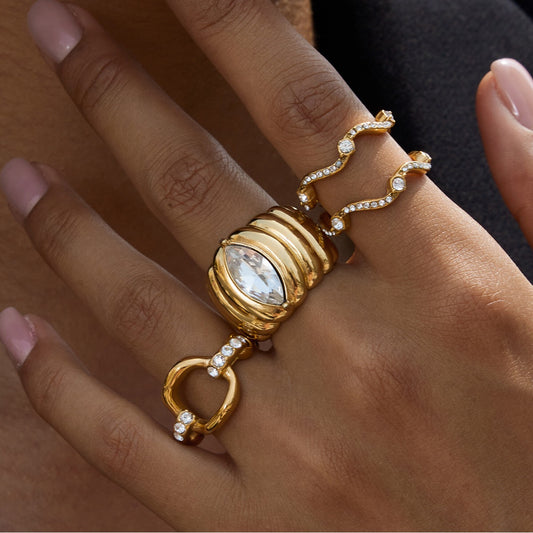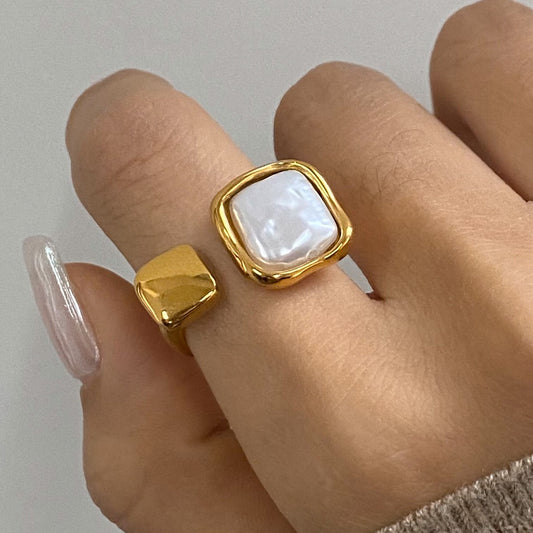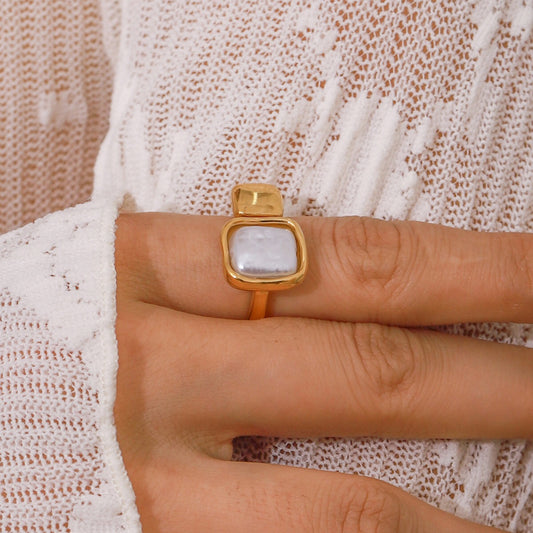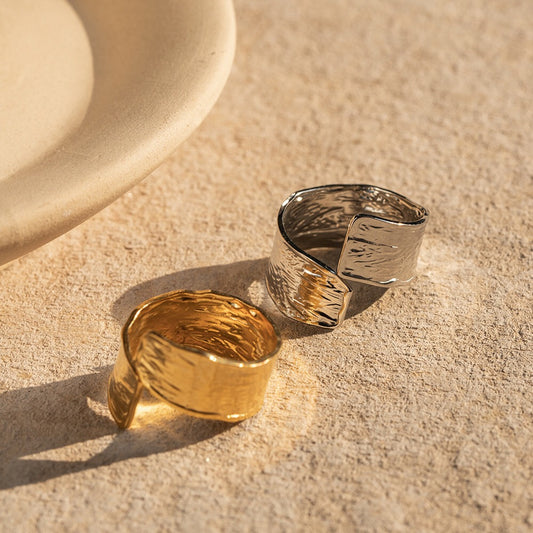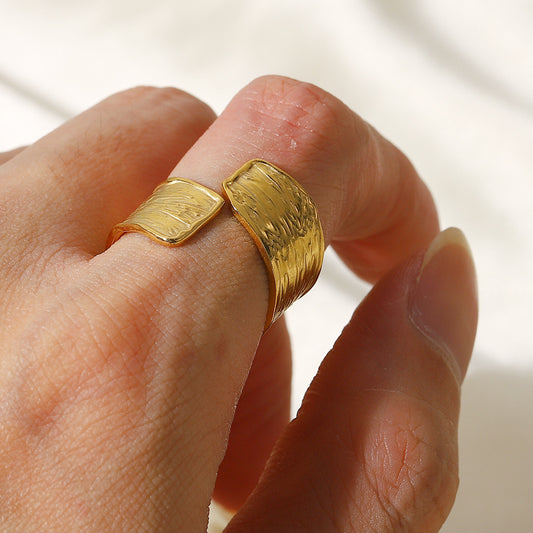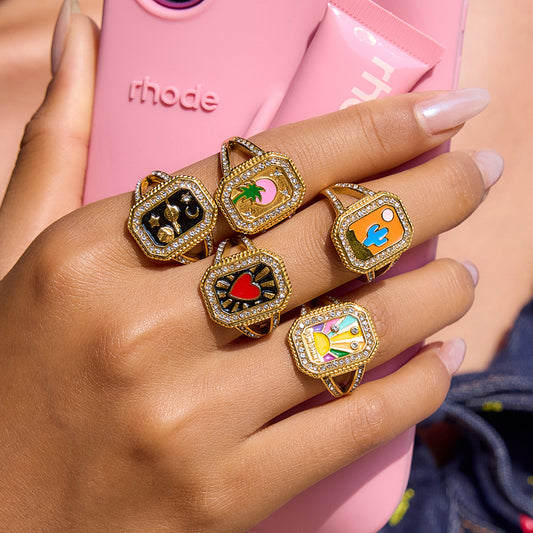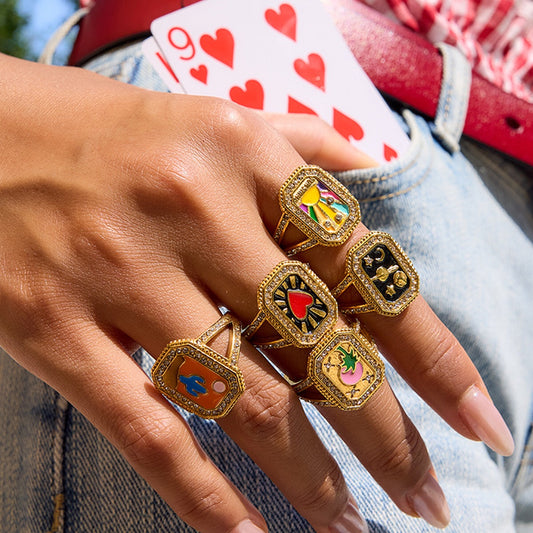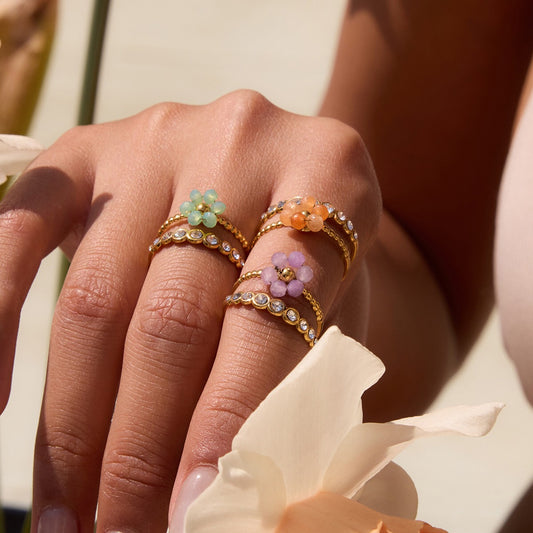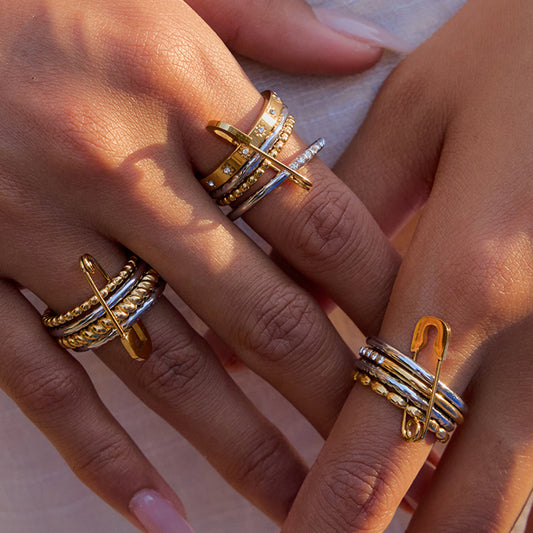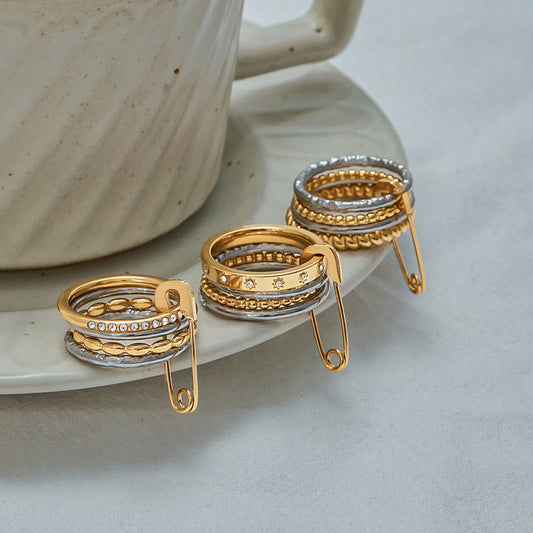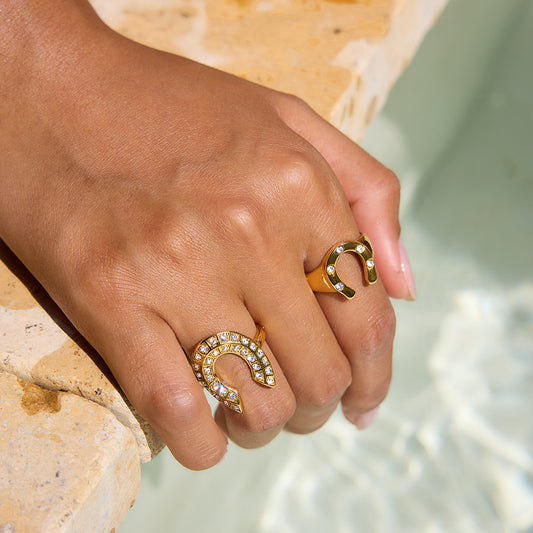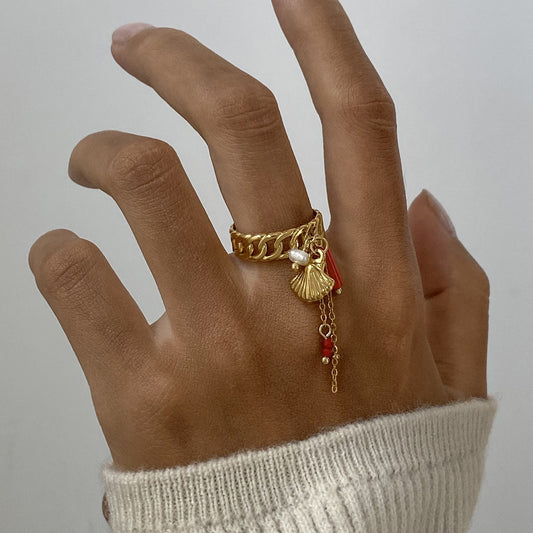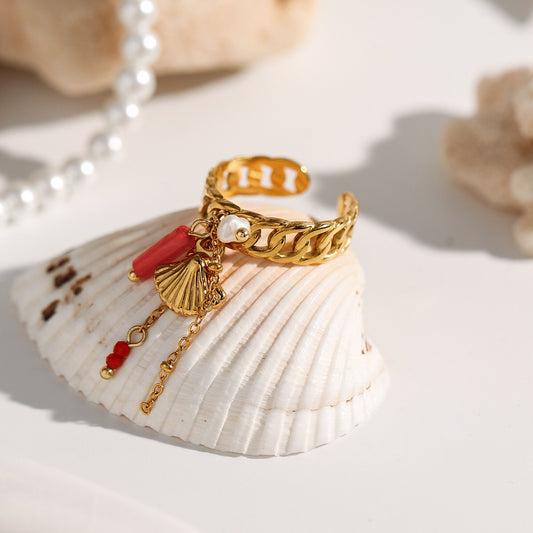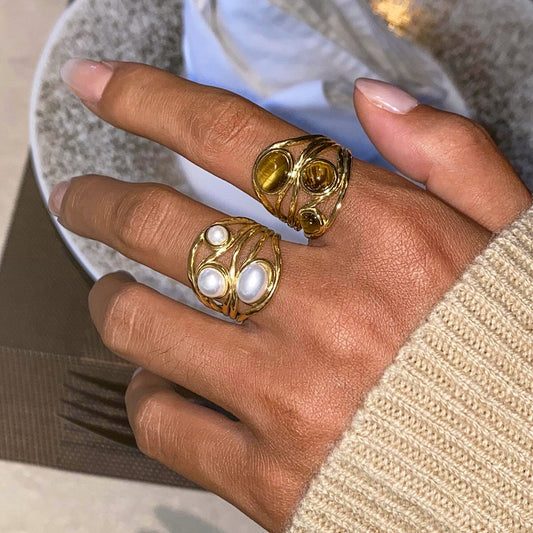Wedding bands for women are more than just jewelry—they’re a tangible symbol of lifelong love, and their significance is reflected in their enduring popularity. The Global Wedding Rings Market was valued at USD 97.3 billion in 2024 and is projected to grow at a CAGR of 6.6% from 2025 to 2034, reaching USD 181 billion. Each year, an estimated 2.5 million wedding bands for women are sold in the U.S. alone, as couples seek pieces that will stand the test of time—just like their commitment. Whether you’re shopping for your wife, choosing a band to complement your engagement ring, or learning to care for this precious piece, this guide covers everything you need to know about wedding bands for women.

What Are Wedding Bands for Women?
Wedding bands for women are circular rings designed to be exchanged during wedding ceremonies (or gifted as a symbol of marital commitment) and worn daily thereafter. Unlike engagement rings— which often feature center stones or intricate detailing—wedding bands prioritize simplicity, durability, and symbolism. They’re crafted to represent an unbroken circle of love, with designs ranging from sleek, plain metal bands to those accented with diamonds, gemstones, or engravings. At their core, these bands are meant to be worn for decades, so materials and fit are chosen with long-term wear in mind.
Key Characteristics of Women’s Wedding Bands
-
Materials: The most popular options are durable, tarnish-resistant metals that stand up to daily use:
-
Platinum: Hypoallergenic, scratch-resistant, and naturally white (no plating needed)—ideal for those with sensitive skin or a preference for luxury.
-
14k/18k Gold: Available in yellow, white, or rose gold; 14k is more durable (great for active lifestyles), while 18k offers richer color (perfect for those who prioritize warmth).
-
Palladium: A more affordable alternative to platinum, with a similar white hue and lightweight feel.
-
Design Focus: Most bands lean into minimalism, but details like milgrain edges (tiny metal beads), channel settings (gemstones set in a “channel”), or engravings (names, dates, or vows) add personalization without sacrificing durability.
-
Fit: Unlike fashion rings, wedding bands are sized to fit snugly (but comfortably) to avoid slipping off during daily activities—many are also “comfort-fit” (rounded inside) for all-day wear.
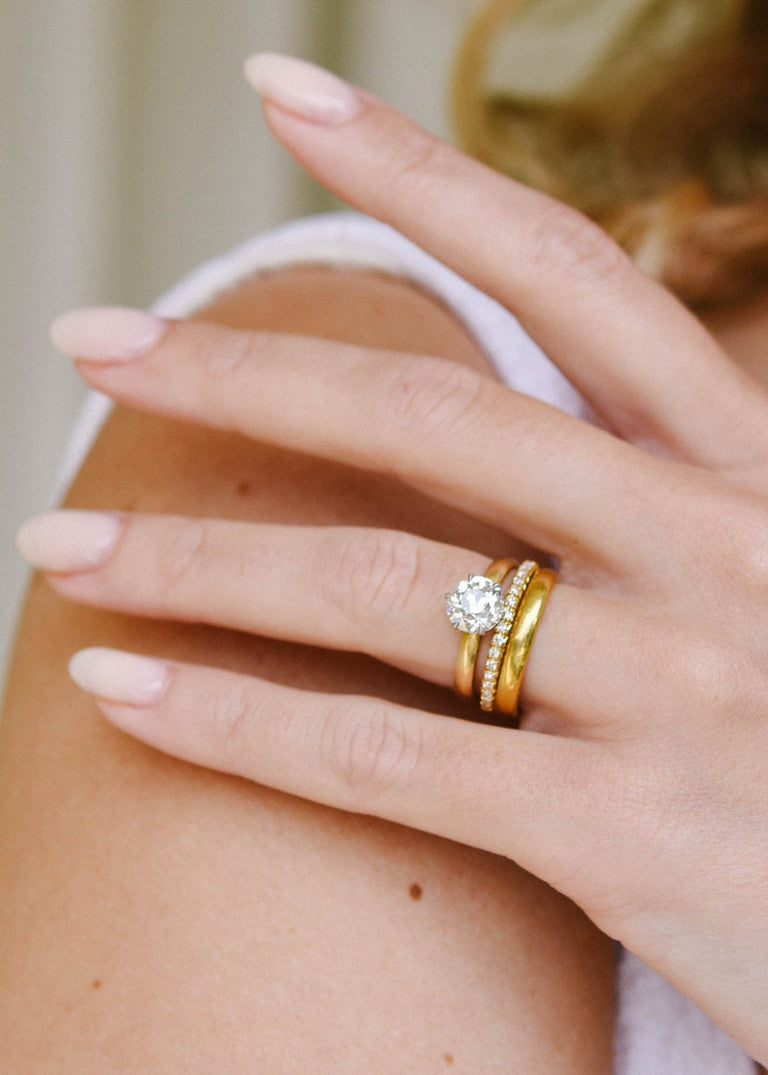
How They Differ from Engagement Rings
-
Purpose: Engagement rings signal intent to marry, while wedding bands symbolize the marriage itself.
-
Design: Engagement rings often have a focal point (e.g., a diamond), while wedding bands are simpler—designed to complement (not compete with) engagement rings when stacked.
-
Wearability: Wedding bands are meant for 24/7 wear; engagement rings may be removed for activities like cooking or working out (though many women wear both daily).
Why Are Wedding Bands for Women So Popular?
Wedding bands for women have remained a staple of marital tradition for centuries—not just for their symbolism, but because they meet practical and emotional needs for brides and wives alike.
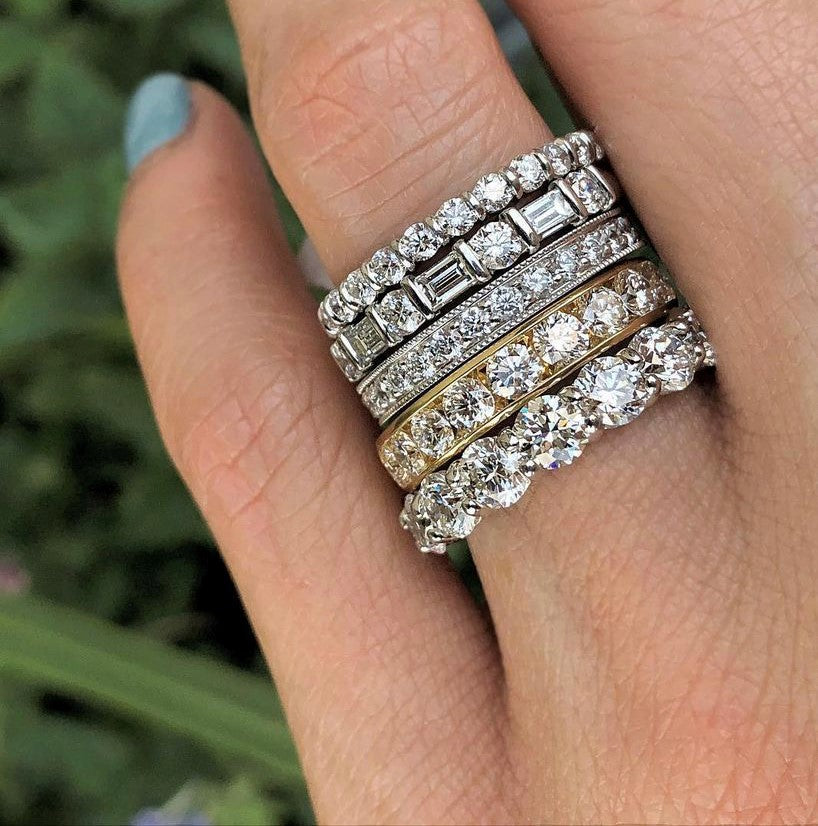
Timeless Symbolism of Forever
The circular shape of a wedding band is universally recognized as a symbol of unending love—no beginning, no end. For many women, wearing a wedding band is a daily reminder of their commitment to their partner, making it far more meaningful than a fashion accessory. It’s also a public sign of their relationship, which many couples value as a way to honor their bond.
Durability for Daily Wear
Unlike delicate jewelry (e.g., dangle earrings, beaded bracelets), wedding bands are built to withstand the demands of everyday life:
-
They resist scratches from cooking, cleaning, or working with hands.
-
Materials like platinum and 14k gold don’t tarnish or fade, even with frequent exposure to water or soap.
-
Comfort-fit designs mean they can be worn while sleeping, working, or exercising without irritation.
Versatility to Match Personal Style
Wedding bands for women aren’t one-size-fits-all—they adapt to individual tastes:
-
Minimalists can choose a plain metal band.
-
Those who love sparkle can opt for a diamond-encrusted eternity band.
-
Vintage lovers might prefer a band with milgrain edges or hand-engraved details.
This versatility ensures every woman can find a band that feels “like her,” rather than a generic tradition.
Sentimental Value That Grows Over Time
Wedding bands often become heirlooms, passed down to children or grandchildren. They accumulate memories—worn through career milestones, family vacations, and quiet daily moments—making them far more valuable than their monetary cost. For many wives, their wedding band is one of the most cherished possessions they own.
Popular Styles of Wedding Bands for Women
From classic to contemporary, wedding bands for women come in styles to suit every taste. Below are the most in-demand options, each with its own vibe and benefits.
Classic Wedding Band Styles (Timeless)
These styles never go out of fashion, making them a safe choice for those who want a band that will feel relevant for decades:
-
Plain Metal Band: A sleek, unadorned band in platinum, gold, or palladium. It’s simple, versatile, and pairs perfectly with any engagement ring. 14k yellow gold plain bands are a top choice for their warmth and durability.
-
Milgrain Edge Band: A plain metal band with tiny, raised metal beads (milgrain) along the edges. It adds subtle texture without being flashy—ideal for those who want a touch of elegance.
-
Channel-Set Diamond Band: Small diamonds set in a narrow “channel” along the band, so the stones sit flush with the metal. It’s sparkly but low-profile, great for women who want shine without worrying about snagging.
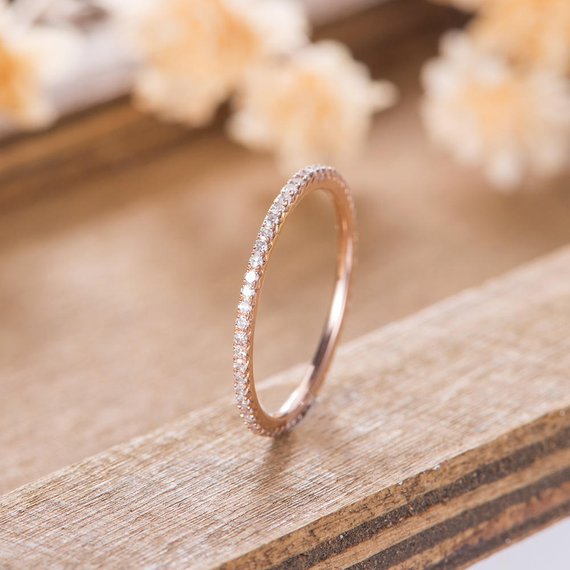
Contemporary Wedding Band Styles
For those who prefer modern flair, these styles offer fresh takes on tradition:
-
Eternity Band: A band encrusted with diamonds (or gemstones) all the way around, symbolizing “forever love.” It’s a popular choice for anniversary gifts or as a standalone wedding band for minimalist engagement rings.
-
Stackable Band: A thin, delicate band designed to be layered with other bands (e.g., an engagement ring + 1–2 stackable wedding bands). They’re often sold in sets, with options like plain metal, tiny diamonds, or colored gemstones.
-
Mixed-Metal Band: Combines two or more metals (e.g., yellow gold + white gold, rose gold + platinum) for a trendy, personalized look. It’s perfect for women who love mixed-metal jewelry or want a band that matches multiple pieces.
Vintage-Inspired Wedding Band Styles
These styles draw inspiration from eras like the 1920s (Art Deco) or 1950s (mid-century modern), adding nostalgia and uniqueness:
-
Art Deco Band: Features geometric patterns (e.g., triangles, chevrons) or filigree (intricate metalwork). Often made with white gold or platinum, it’s a bold choice for lovers of retro glamour.
-
Hand-Engraved Band: A band with custom engravings (e.g., floral patterns, scrollwork) done by hand. It’s one-of-a-kind and adds a personal, artisanal touch.
-
Vintage Diamond Band: Small, old-cut diamonds set in a low-profile design, mimicking the look of bands from the early 1900s. It’s perfect for brides who want a “heirloom feel” without buying antique.
How to Wear Wedding Bands for Women
Wearing a wedding band is personal, but there are practical and stylistic tips to help you make the most of this meaningful piece—whether you’re pairing it with an engagement ring or wearing it alone.
Wearing with an Engagement Ring
-
Traditional Stack: Wear the wedding band closest to your heart (on the inside of the engagement ring). This follows the tradition of “placing the band first” during the wedding ceremony, with the engagement ring added on top.
-
Matching Metals: For a cohesive look, choose a wedding band in the same metal as your engagement ring (e.g., 14k white gold engagement ring + 14k white gold wedding band). If you want contrast, opt for complementary metals (e.g., rose gold engagement ring + yellow gold band).
-
Balancing Sizes: If your engagement ring has a large center stone, choose a thin wedding band (2–3mm) to avoid overwhelming the ring. If your engagement ring is minimalist, a slightly wider band (4–5mm) can add balance.
Wearing as a Standalone Band
-
Statement Width: If you’re not wearing an engagement ring, a wider band (5–6mm) or an eternity band can be a focal point. Pair it with simple earrings or a delicate necklace to keep the look balanced.
-
Mixing with Fashion Rings: Layer your wedding band with 1–2 thin fashion rings (e.g., a plain metal ring or a ring with a small gemstone) on the same finger. Keep the total width under 10mm to avoid feeling bulky.
-
Everyday Versatility: A standalone wedding band works with every outfit—from jeans and a t-shirt to a wedding dress. It adds subtle elegance without requiring extra styling.
Wearing for Special Occasions
-
Adding Sparkle: For events like anniversaries or weddings, pair your wedding band with a diamond-encrusted stackable band or a statement bracelet. This elevates the look without overshadowing the band’s symbolism.
-
Matching to Outfits: A yellow gold wedding band complements warm-toned outfits (beige, orange, red), while a white gold or platinum band pairs with cool tones (black, gray, blue). Rose gold works with both warm and cool colors.
-
Avoiding Damage: For activities like gardening, cooking, or working out, remove your wedding band (if you’re comfortable) to prevent scratches. Store it in a soft pouch or jewelry box to keep it safe.
Wedding Bands for Women: Perfect Gift for Your Wife
A wedding band is a deeply meaningful gift for your wife—whether you’re renewing vows, celebrating an anniversary (especially the 10th, known as the “tin/ aluminum anniversary” or 25th “silver anniversary”), or simply want to honor your love. It’s a gift that says, “Our forever is still going strong.”
Why It Resonates as a Wife Gift
-
Symbolism: Unlike generic gifts (e.g., flowers, jewelry boxes), a wedding band reinforces your marital commitment. It’s a physical reminder of the vows you shared.
-
Daily Wear: She’ll wear it every day, so it’s a gift that stays with her—unlike a sweater or a gadget that may be used occasionally.
-
Personalization: You can customize the band with engravings (e.g., your wedding date, a line from your vows) or her favorite gemstone, making it unique to your relationship.
Top Wedding Band Gifts for Your Wife
-
Eternity Band: A diamond eternity band is a classic anniversary gift, symbolizing “forever love.” Choose diamonds in her favorite cut (e.g., round, princess) for a personal touch.
-
Engraved Band: A plain metal band engraved with a meaningful phrase (e.g., “I choose you every day”) or your initials. It’s simple but deeply personal.
-
Mixed-Metal Band: If she loves mixed metals, a band that combines her favorite metals (e.g., rose gold + white gold) shows you pay attention to her style.
Tips for Choosing the Right Band
-
Know Her Style: If she prefers minimalism, opt for a plain metal or thin channel-set band. If she loves sparkle, an eternity band or a band with small diamonds is ideal.
-
Check Her Metal Preference: Look at her existing jewelry—does she wear yellow gold, white gold, or rose gold? Stick to what she loves to ensure she’ll wear the band.
-
Get the Right Size: If you don’t know her ring size, borrow one of her existing rings (that fits the same finger) and have a jeweler measure it. Most jewelers also offer free resizing if the band is slightly off.
How to Clean Wedding Bands for Women
Wedding bands are durable, but they need regular cleaning to keep their shine—especially if they have diamonds or gemstones (which can collect dirt and oil). The good news is cleaning them is simple, and you can do it at home with basic supplies.
Daily Care to Prevent Buildup
-
Wipe After Wear: Use a soft, dry cloth (like a microfiber or jewelry cloth) to wipe your wedding band after each day. This removes skin oils, lotion, or dirt that can dull the metal or diamonds.
-
Remove Before Activities: Take off your band before showering, swimming, or applying lotion/makeup. Water and chemicals can build up on the band, making it look dull.
-
Store Properly: When you’re not wearing the band, store it in a soft pouch or a jewelry box with a separate compartment. Avoid storing it with other jewelry (like rings with sharp edges) that can scratch the band.
Step-by-Step Home Cleaning
For light dirt or dullness, follow these steps:
-
Mix a Mild Solution: In a small bowl, combine 1 cup warm water with 1–2 drops of mild dish soap (avoid bleach or harsh detergents).
-
Soak the Band: Let the band soak for 10–15 minutes. This loosens dirt and oil from the metal and diamond settings.
-
Scrub Gently: Use a soft-bristled toothbrush (or a jewelry brush) to scrub the band—focus on crevices around diamonds or engravings, where dirt hides. Be gentle to avoid scratching the metal.
-
Rinse and Dry: Rinse the band under warm water to remove soap residue. Pat it dry immediately with a soft cloth—never air-dry (water spots can form on metal or diamonds).
-
Polish (Optional): For extra shine, use a jewelry polishing cloth (designed for gold or platinum) to gently buff the band. Avoid polishing diamond-encrusted bands too hard—this can loosen stones.
Professional Cleaning (Annual)
Once a year, take your wedding band to a jeweler for professional cleaning. They’ll use ultrasonic cleaners (safe for most bands) to remove deep-seated dirt and check for loose stones or damage. This helps extend the band’s life and keep it looking like new.
What to Avoid When Cleaning
-
Abrasive Cleaners: Skip toothpaste, baking soda, or scouring pads—these scratch metal and can damage diamond settings.
-
Harsh Chemicals: Avoid jewelry cleaners with ammonia or alcohol—they can discolor gold or damage gemstones like pearls (if your band has them).
-
Ultrasonic Cleaners at Home: Home ultrasonic cleaners can be too harsh for delicate bands (e.g., those with engravings or small diamonds). Stick to professional cleaning for these styles.
How Much Are Wedding Bands for Women?
The cost of a wedding band for women varies widely based on material, design, and gemstones. Below is a breakdown of typical price ranges to help you budget.
Budget-Friendly Options (\(100–\)500)
-
10k Gold Plain Band: 10k gold is more affordable than 14k or 18k, with a subtle yellow hue. A plain 10k gold band (3–4mm) costs \(100–\)250.
-
Sterling Silver Band: A durable, hypoallergenic option with a white hue. Sterling silver bands (with or without small cubic zirconia) cost \(50–\)200.
-
Titanium Band: Lightweight, scratch-resistant, and affordable. Titanium bands cost \(80–\)300, making them great for active lifestyles.
Mid-Range Options (\(500–\)2,000)
-
14k Gold Band: The most popular choice—14k gold balances durability and color. A plain 14k gold band (3–5mm) costs \(500–\)800; a channel-set diamond band (with small diamonds) costs \(800–\)1,500.
-
Palladium Band: A white metal alternative to platinum, with a similar look but lower cost. Palladium bands cost \(600–\)1,200.
-
Stackable Diamond Band: A thin band with tiny diamonds (0.10–0.25 carats total). These cost \(700–\)1,800, depending on the number of diamonds.
Premium Options ($2,000+)
-
18k Gold Band: A luxurious option with a rich, warm hue. An 18k gold eternity band (with 0.50–1 carat total diamonds) costs \(2,000–\)5,000.
-
Platinum Band: Hypoallergenic, scratch-resistant, and long-lasting. A plain platinum band (4–5mm) costs \(2,000–\)3,500; a diamond-encrusted platinum band costs \(3,500–\)10,000+.
-
Designer Band: Bands from luxury brands (e.g., Tiffany & Co., Cartier) or custom-made bands (with hand-engraving or rare gemstones) can cost \(5,000–\)20,000+, depending on the design.
Note: Sales (e.g., Black Friday, holiday weekends) often offer 10–20% off mid-range and premium bands. You can also save by choosing a band with fewer diamonds or a narrower width.
What Size Wedding Band for a Woman?
Choosing the right size is crucial—an ill-fitting band can slip off (risking loss) or feel uncomfortable (making you want to remove it). Here’s how to find the perfect size:
How to Measure Ring Size at Home
-
String/Strip Method: Cut a thin strip of paper or string, wrap it around the base of her left ring finger (where the band will sit), and mark where the ends meet. Measure the length with a ruler (in millimeters) and use a ring size chart to find the corresponding size (U.S. sizes range from 4–10, with 6 being the most common for women).
-
Existing Ring Method: If she has a ring that fits her left ring finger, measure the inside diameter (in millimeters) with a ruler and match it to a size chart. For example, a 16mm diameter = size 6.
-
Sizing Kit: Most online jewelers (like James Allen or Blue Nile) offer free ring sizing kits—these include plastic rings in different sizes to test for the best fit.
Tips for Accurate Sizing
-
Measure at the Right Time: Fingers swell in the morning, after exercise, or in hot weather—measure in the afternoon (when fingers are at their “normal” size) for the most accurate fit.
-
Consider Band Width: Wider bands (5mm+) feel tighter than narrow bands—if you’re choosing a wide band, size up by ½ size (e.g., from 6 to 6.5) for comfort.
-
Get Professional Sizing: For the most accuracy, visit a local jeweler—they use a metal sizing tool to find the perfect fit, and can adjust for factors like knuckle size (if her knuckles are larger than the base of her finger).
What If the Band Is the Wrong Size?
Most jewelers offer free resizing for plain metal bands (within 1–2 sizes) if you purchase from them. Engraved bands or diamond bands may cost \(20–\)50 to resize (since the design or settings need to be adjusted). Avoid resizing platinum bands more than once—platinum is a soft metal, and frequent resizing can weaken it.
Frequently Asked Questions About Wedding Bands for Women
Q: Can I wear my wedding band every day?
A: Yes! Wedding bands are designed for daily wear—they’re durable enough to withstand cooking, typing, and most activities. Just remove them during high-risk tasks (like cleaning with chemicals) to avoid damage.
Q: Should my wedding band match my engagement ring?
A: It’s up to you! Many women choose bands that match their engagement ring’s metal (e.g., white gold engagement ring + white gold band) for a cohesive look, but mixed metals (e.g., yellow gold band + white gold engagement ring) are also trendy and personal.
Q: Can I add diamonds to an existing wedding band?
A: Yes—many jewelers offer diamond-setting services for plain wedding bands! If your band is made of a durable metal (like 14k gold or platinum), a jeweler can add small diamonds via pavé (tiny diamonds set close together) or channel-set (diamonds in a groove) designs. Keep in mind: the band’s width matters (narrow bands <3mm can only fit very small diamonds), and the cost will depend on the number and quality of diamonds (typically \(200–\)1,000+).
Q: How long should a women’s wedding band last?
A: With proper care, a quality wedding band (14k gold, platinum, or palladium) can last a lifetime—even 50+ years! These metals are resistant to wear, and diamonds (if included) are the hardest natural gemstone, so they won’t chip easily. The only maintenance needed is occasional cleaning and, if necessary, resizing (for changes in finger size due to pregnancy, weight fluctuations, etc.).
Q: Is it okay to have a wedding band without diamonds?
A: Absolutely! Plain metal bands are just as meaningful (and popular) as diamond bands—they prioritize the symbolism of the ring over sparkle. Many women prefer plain bands for practical reasons (e.g., active lifestyles, workplaces that restrict jewelry) or personal style (minimalism). A plain gold or platinum band is timeless and can be paired with an anniversary diamond band later if you want to add sparkle.
Q: Can I wear my wedding band on a different finger if my left ring finger is too small/large?
A: Yes! There are no strict rules—wear it on whichever finger feels comfortable and meaningful. Some women wear it on their right ring finger (common in European cultures), while others opt for a chain necklace (called a “ring necklace”) to keep it close if their fingers change size (e.g., during pregnancy). The most important thing is that it feels like a true representation of your commitment.
Conclusion: Wedding Bands for Women—Symbolize Your Forever with Style
Wedding bands for women are more than just a piece of jewelry—they’re a tangible promise of love, a daily reminder of partnership, and a timeless accessory that grows with you. Whether you choose a plain platinum band for its simplicity, a diamond eternity band for its sparkle, or an engraved gold band for its sentiment, this piece will mark every moment of your marriage—from quiet mornings at home to milestone anniversaries.
Now that you know how to choose the right style, size, and care for your wedding band (or gift one to your wife), it’s time to find the piece that symbolizes your forever. Browse our curated collection of women’s wedding bands—from classic plain metals to modern stackable designs—and discover a band that fits your style, budget, and heart. Whether you’re planning your wedding, renewing vows, or celebrating a love that lasts, a wedding band for women is the perfect way to wear your commitment proudly. Shop now and let your forever story shine—one timeless band at a time.



